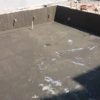No products in the cart.

Water tank insulation is one of the essential factors for maintaining water quality and preventing leakage or contamination over time. Tanks may be exposed to environmental factors such as heat and humidity, which increases the likelihood of water leakage or damage to the tank infrastructure. Therefore, good tank insulation is essential to ensure the purity of water and protect it from external factors that may affect its quality. In this article, we will discuss the importance of tank insulation and its vital role in preserving water and protecting infrastructure in the long term. Types of tanks that need insulationMany types of tanks need insulation to ensure their protection from leakage and water contamination, especially in environments exposed to harsh climatic factors. Here are the most important types of tanks that need insulation: Ground tanks:These tanks are usually buried underground and are exposed to constant pressure from soil and groundwater. Insulating ground tanks protects them from water leakage from the inside or mixing with groundwater, and also prevents corrosion resulting from constant humidity. Overhead tanks:They are installed on the roofs of buildings or in high places, and are affected by weather factors such as extreme heat and direct sunlight. Insulation here protects the tanks from temperature changes that may affect the stored water and maintains the integrity of the tank structure. Metal tanks:These tanks are made of metal materials such as iron or steel, which may be susceptible to rust and corrosion due to water and moisture. Water tank insulation is necessary here to prevent corrosion and extend the life of the tank while maintaining the purity of the stored water. Concrete tanks:These tanks are made of concrete and are used to store large quantities of water. Although concrete is strong, it may be exposed to micro-leakage over time. Insulation here is necessary to prevent leakage and protect the concrete structure from corrosion due to moisture absorption. Industrial water tanks:These tanks are used in factories and industrial facilities to store water or other liquids. These tanks require strong insulation to protect them from chemical corrosion and ensure that the stored materials do not leak. Plastic water tanks:Although these tanks are naturally resistant to corrosion, additional insulation may be required to protect them from extreme heat and sunlight, especially if the tanks are overhead. Agricultural tanks:They are used to store water for agricultural irrigation purposes. Insulation here requires protecting water from pollution and ensuring that large quantities are not lost due to leakage. The importance of water tank insulationPreserving water from waste and rationalizing its consumption.Preserving the foundations of buildings and properties from damage due to water leakage into reinforcement materials.Preserving the roads adjacent to the tanks from damage due to water leakage and its impact on the soil.Preserving water from pollution as a result of water leakage from and to ground tanks.Reducing the economic burden on the consumer by reducing the amount of water bills consumed.Learn about the materials used in water tank insulationEpoxy tank insulation:It is a very cohesive material and has a great ability to resist all factors affecting the water inside the tank from light, heat and water, as well as affecting both acids and bacteria. Since we have reached this point, we must note the importance of the material used in insulation not containing toxic components that may harm the health of humans and those around them, especially children. Unfortunately, there are many companies that do not care about this matter, but it is very necessary to maintain human health. Epoxy is one of these non-toxic and harmless materials to human health, so our company is interested in using it in insulating ground tanks. Cement insulation for the tank:This material is also considered one of the best materials for insulating ground water tanks, as this material is used to insulate concrete tanks because of its great strength in endurance, cohesion and resistance to all changes and external and internal factors as well. It is similar to the plastic wall paints used in homes. Here is how to implement water tank insulationThe surface that you want to insulate is cleaned well.The concrete is treated by any cracks in it.The nesting and cracking are also injected by using cement with a resistant and non-shrinking property with the addition of occlusive materials.A layer of resistant cement is made with a sealant material of about 25 cm in height. Then the cement insulation is prepared by adding the cement powder to the water and not the other way around, and the water ratio should not exceed about 35 percent, then the mixture is stirred. Then the mixture is left for about a quarter of an hour, then mixed again using the trowel. Now it is time to paint the tank with cement insulation, then leave it for at least 6 hours until the first layer dries completely. Then the cement insulation mixture is prepared for painting the second layer, taking into account that the water ratio in the mixture does not exceed 25% approximately, so that a layer and mixture with a very high concentration are obtained. Then the second layer should be painted perpendicular to the first layer, then left for at least 6 hours approximately until it dries. Then the third layer of cement insulation is painted with the same concentration as the second layer, taking into account that it should be perpendicular. Water tank insulation is an essential element to maintain tank efficiency and ensure water safety. With proper insulation, tanks can be protected from leakage, corrosion, and contamination resulting from harsh environmental conditions. Whether they are ground, overhead, metal, concrete, or plastic tanks, good insulation enhances the life of the tanks and ensures continued use of the



